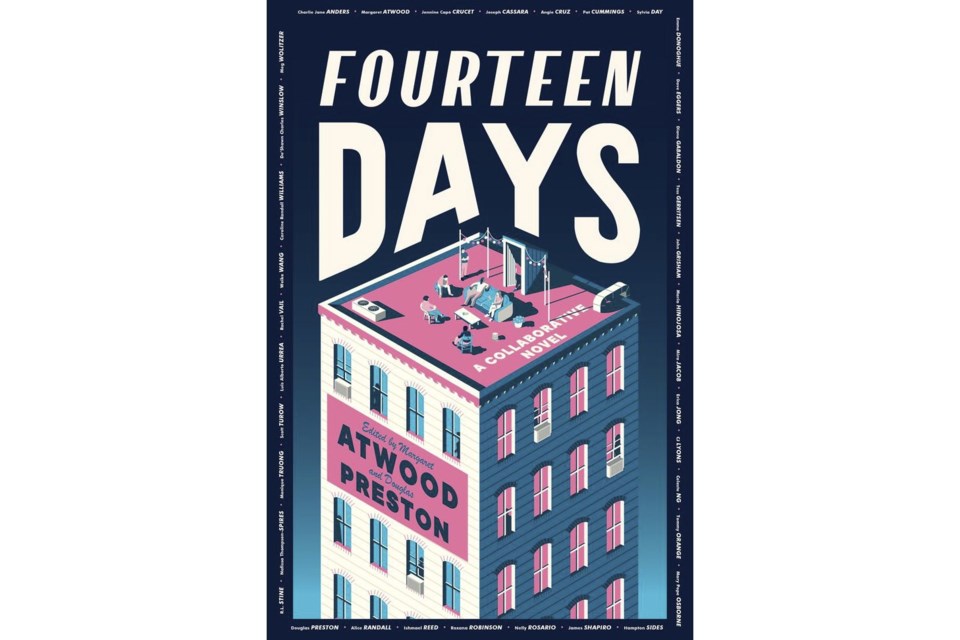Almost four years since COVID-19 became a household term, a new work of fiction proves that even a global pandemic can’t curb creativity.
“Fourteen Days” is billed as a “collaborative novel.” Edited by Margaret Atwood and Douglas Preston, the book was written by 36 American and Canadian authors. Many of the names will be familiar to readers. In addition to Atwood, contributors include Emma Donoghue, Dave Eggers, John Grisham, Erica Jong, Celeste Ng, R.L. Stine and Scott Turow. Preston wrote the frame narrative that pulls the stories together into a novel with a plot, conflicts and a surprising resolution of its own.
Consisting of 14 chapters dated from March 31 to April 13, 2020, the book tells the story of how the residents of the Fernsby Arms, “a decaying, crapshack tenement” on Manhattan’s Lower East Side “that should have been torn down long ago,” spent the early weeks of the lockdown. They don’t have much in common except for their residence and the fact they were unable to get out of town during the pandemic like more affluent city dwellers did. Assembling on the rooftop to bang pots and pans in appreciation of the healthcare heroes during their shift change, the characters decide to spend each evening storytelling. They haul their own furniture to the roof, sit six feet apart, and share.
Multiple stories are squeezed into each chapter, some just a page or two long. The writing is unattributed except at the end, but most readers will enjoy flipping to the back after reading a story so they can give the author credit. The narrator is the building’s superintendent, and she’s inherited a binder left behind by the previous super in which he described many of the tenants, assigning them nicknames. “‘She is the Lady with the Rings,’ he wrote of the tenant in 2D. ‘She will have rings and things and fine array.’” Or: “5C: He is Eurovision, a man who refuses to be what he isn’t.” The new super, who calls herself “1A,” decides to add to the binder by recording and writing down the stories she hears on the roof.
Those stories, as one might expect given three dozen writers, are a mixed bag. There are lengthy jokes, a smattering of horror, some nonfiction, even romances, poetry and parables. Befitting their oral delivery in the book, they sort of wash over you as a reader. A few chapters later and you just remember things like “a nurse who can smell death,” “an amputee blues guitarist” or “how the plague was instrumental in launching Shakespeare’s career in the late 16th century.”
The thing they have in common is the same thing shared by the three dozen writers of this collaborative novel — they’re an attempt to “make sense of the senseless and bring order to disorder,” as the editors write in their preface. They’re proof that the stories we leave behind are what makes us human.
___
AP book reviews:
Rob Merrill, The Associated Press



